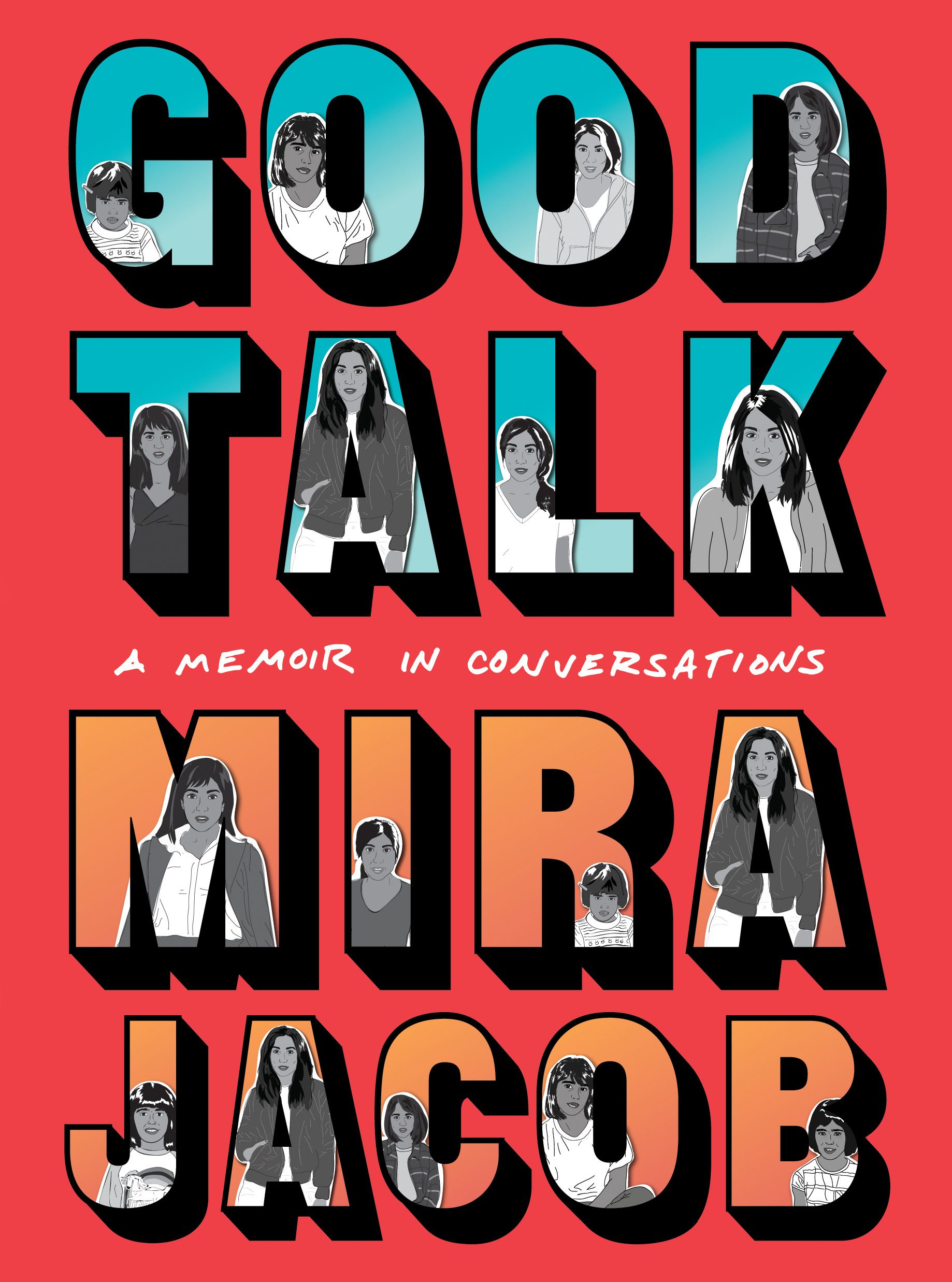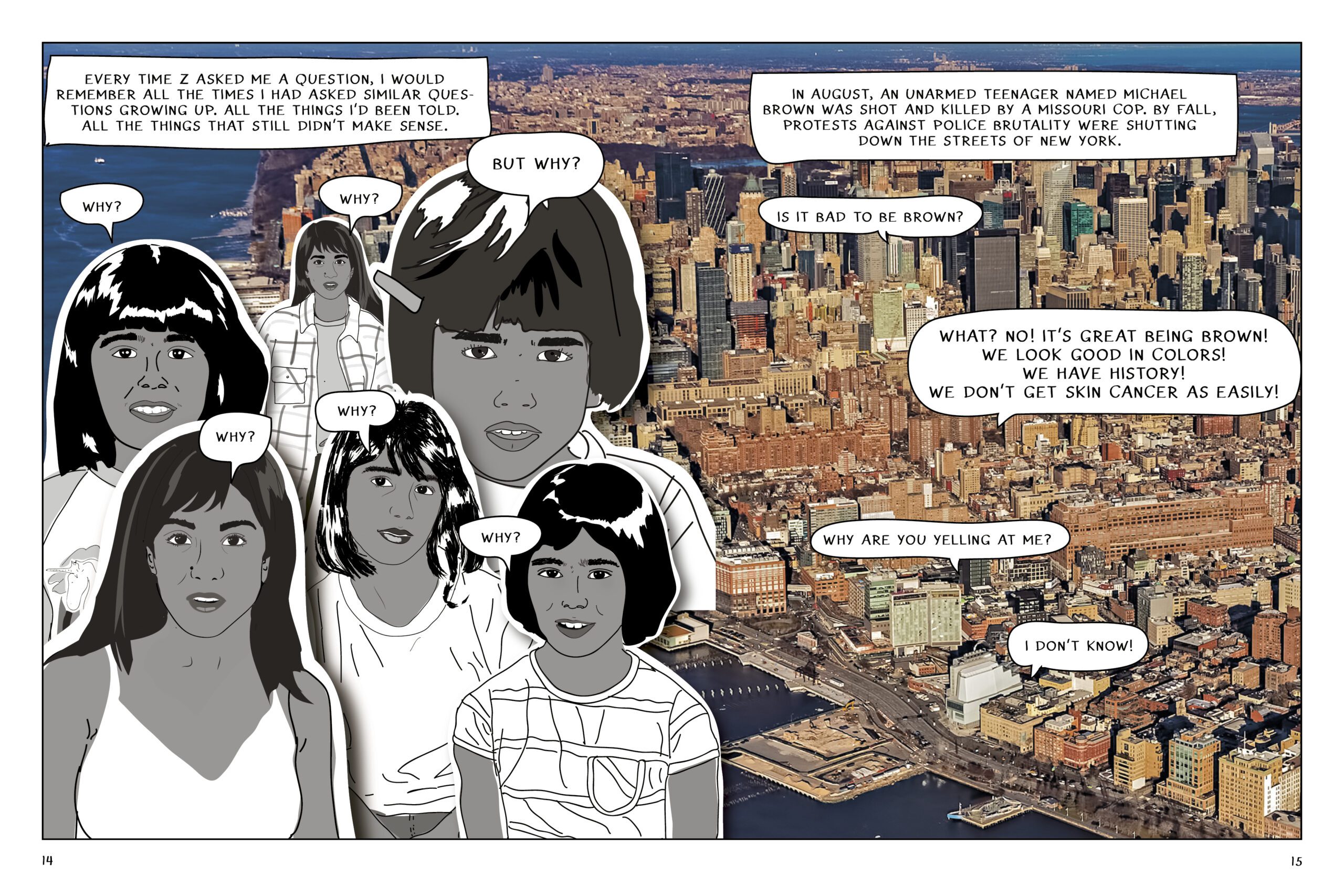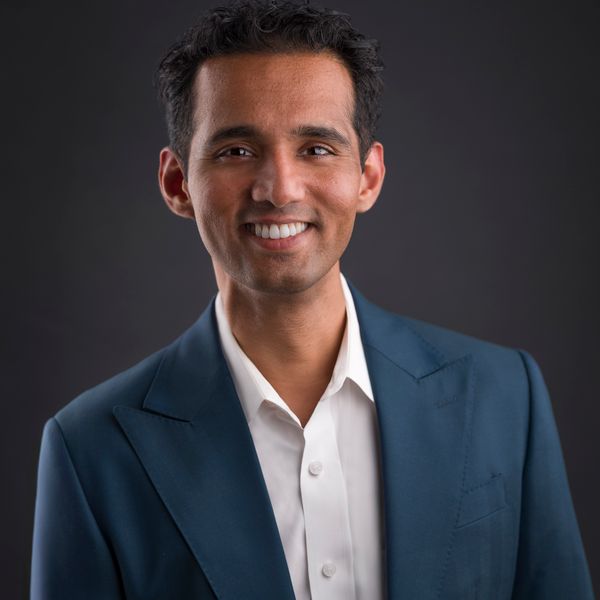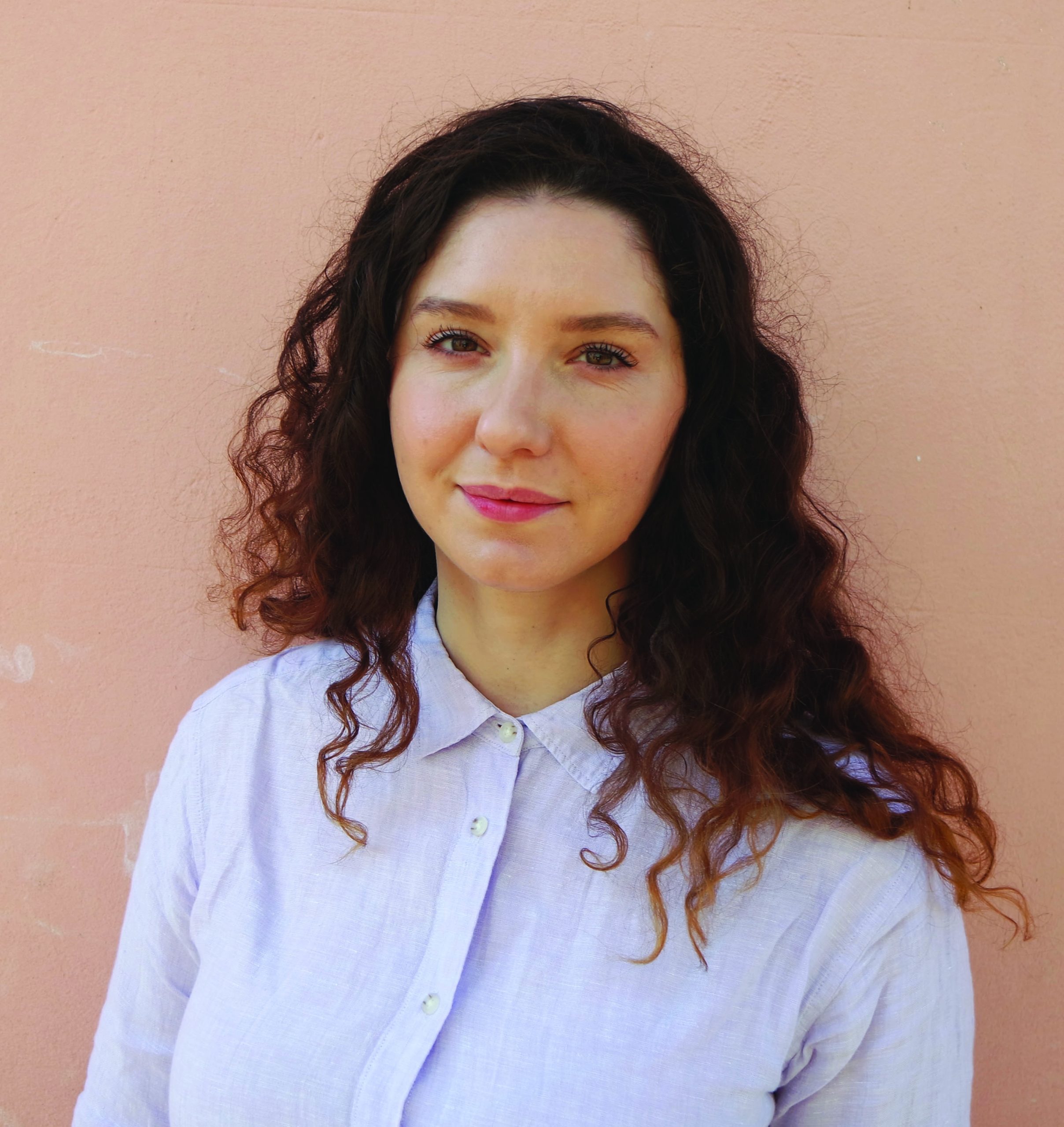The emotional and intellectual wallop one feels reading Mira Jacob’s Good Talk might be partly due to its unique form. It’s an illustrated series of real-life conversations the East-Indian-born, American-raised author has had with her mixed-race son, spurred by questions like “Can Indians be racist?” and “Was Michael Jackson brown or was he white? Are you going to turn white?” Jacob dives headfirst into life as a brown person in Trump’s America, while interrogating her memories as a teenager in New Mexico, as a young woman in post-9/11 New York, and, finally, as a writer.
In truth, Good Talk’s graphic elements have little to do with its achievement, which is substantial. Rather, it’s Mira Jacob’s talent and generosity, her rage and her intellect. The book’s conversations are the same ones thousands of us are having with our relatives, with our children, with our in-laws. In a sense these conversations are unfinished: upon closing the book you’ll want to give it to a friend so that you might continue the dialogue.
Mira Jacob is also the author of the novel The Sleepwalker’s Guide to Dancing, and she is often writing for Electric Literature and Tin House when not giving superb advice to other writers and artists. I was fortunate to speak by phone with her the week before Good Talk’s publication.
***
The Rumpus: Where did the project originate? With the BuzzFeed article?
Mira Jacob: I had the idea of drawing conversations years before. Then, my son Z was six and became obsessed with Michael Jackson and had all these questions about his own skin color, it seemed like the only way to handle it, creatively. Some of the questions—Did he lose his other glove?—were funny Some of them—Are White people afraid of Brown people?—were devastating.
I realized I had to deal with it somehow. I started writing an essay, and the essay was horrible. I just knew people wouldn’t believe it. They wouldn’t believe me, they wouldn’t believe his questions, they wouldn’t believe how mundane and horrific things could be at the same time. This was 2015 in America, and we were ramping up to this really scary time, when people just don’t believe anything about each other anymore, and no amount of racial pain was valid, you know, you’re just being a snowflake, blah blah blah—and I didn’t want that pointed at him.
So I drew us on printer paper, cut us out, put us on top of the Michael Jackson album, and wrote the conversation in dialogue bubbles. That was the piece for BuzzFeed. As I was doing that one, I kept thinking of all the other conversations I’d had over my life that had been formative and weird and funny. By the time the piece came out I had a good idea of the book I was going to write.
And Ryan, that book was going to be hilarious, okay? HILARIOUS.
Then the 2016 election happened.
I remember meeting with my editor, the first editor of the book, and we were both wrecked. The only thing I could figure out to do was to just keep going. I told him, I’m just going to tell the fucking truth about this moment and I don’t fucking care who it hurts anymore. I don’t care about protecting their egos more than I care about all the lives they are ripping apart. Enough.
Rumpus: I could identify with the anger and despair you feel when talking Trump with conservative relatives. I didn’t realize I needed to see that in literature until I read those pages. You’re going to get a lot of similar replies from readers.
Jacob: It’s funny, because while I appreciate that, I also had to distance myself from what anyone else was going to think about what I wrote. The first book you write is in such a bubble, you know? But with this second, I could just feel the weight of other people’s expectations, their needs. They want a triumphant ending, or they want solutions, or they want really hard-hitting anger in the end.
I rewrote the ending a good ten to fifteen times to satisfy all of those desires. Then I thought, get a hold of yourself. You’re writing this to your son. This is for him. Forget everybody else. Just write the thing you need to tell your boy.
Rumpus: Because its visual nature, you were able to share more of the work-in-progress on social media. Did it feel like you were writing it in public? Which is another way of asking how you felt switching to graphic memoir after working in prose fiction—after working on Sleepwalker’s Guide to Dancing for ten years.
Jacob: It’s a really interesting question. I wrote Sleepwalker’s in total anonymity, from 11 p.m. to 1 a.m., as a working woman and then as a working mother. I wrote it through my dad’s death, through my child’s birth. There were just a lot of things going on in my life. That book was the thing I would return to every night, by myself.
This time, I would have people in the publishing industry say to me, “I know what you’re working on; I look forward to reading it.” As a person who came from complete obscurity, and only published in my forties after I thought the dream was over, I was cheered by that. But it also made me incredibly nervous.
I was doing something I’d never done before. I didn’t know how to draw particularly well at that point. I was staying up really late at night just figuring out how to use the software. So when I ran into publishing people I was thinking: “Oh, you think I’m doing this thing! And perhaps even doing it well! In reality I’m crashing on my face night after night after night.”
It was also scary putting the pieces out: people could see what I was working on. And it was about my actual life.
Rumpus: Some memoirists allow relatives or friends to read the manuscript and remove things they find objectionable or too private. And with a graphic memoir, it’s a different kind of intimacy. We see your husband, your son.
Jacob: My husband is a documentary filmmaker, so we’ve always been very creatively tight. He always shows me his rough cuts; I always show him my rough drafts. We care intensely about what the other person thinks. Too much, sometimes. And we workshop each other in a way that is weirdly rigorous for two people who need to stay vulnerable enough to stay married.
In the course of writing the book, we would get into it. I’d say, “I am writing some things that are hard to write, and they are going to be hard for our family to read.” And sometimes it would upset him because duh. We love our family. We love each other. It was a hard place to be in. But he always came back to me saying, “You just have to write it. You can’t censor yourself because it’s going to hurt other people’s feelings. You just have to write it as fully as you want to, then you can figure out what you want to edit out.”
So I did that. I’m not going to say it was easy—I didn’t sleep for a few years. But it also felt like the best way to move forward.
Rumpus: The book incorporates photography and outside texts in a way not often seen in graphic memoirs. It’s open to the material of the world.
Jacob: I wanted it to feel like it was done with urgency because it was. That meant I had to simplify things in ways that other graphic books don’t often do. I had a series of rules. Early on I decided my characters could never show emotions. I would never draw them laughing, crying, getting angry. I thought with showing emotions, if I do that, then the reader waits for that, you know? And then the character has to carry the emotion as opposed to the reader carrying it. And I want readers to know what that feels like because that is what my body feels like every day. That level of disconnect is what it feels like to walk through an America where these things are happening, and people are not reacting, or tell themselves it’s not happening. It’s crazy and crazy-making.
There were other things I had, little things like: you may never write how you feel. You can only write the action and the dialogue. I ended up breaking that rule after the initial draft. But these rules were there to prevent me from emotionally exhausting myself.
Rumpus: Assembling this book seemed more like the work of a film director than the one-person team of the prose novelist. A full-on production. There’s a lot of risk there. One doesn’t know if it works until fairly late in the process.
Jacob: You’re right, I didn’t know if it was going to work. But also, I didn’t let myself worry about it too much. I’m serious. I was having so much fun making it. I’m a person who likes to use my hands to make things, to cook and draw and sculpt and touch the people I love, so there was a sense of, “This is all mine and I’m gonna make it like no one else can.” There was a kind of recklessness to it.
Rumpus: I’m thinking about your BuzzFeed essay on the state of diversity in the publishing industry. Have you seen any progress, however small? Your imprint could be seen as a step in the right direction.
Jacob: I’m not exaggerating when I tell you that I feel this sizable relief that the One World imprint even exists. I basically have Ruth Bader Ginsburg feelings for each of the editors there: “Oh my god, don’t let anything happen to Chris [Jackson] or Victory [Matsui] or Nicole [Counts]!” They are each doing an inordinate amount of work with all of our dreams on their shoulders.
And yes, there other editors ushering in diversity with the unique advantage of having grappled with their own, but not nearly enough. We need more—that’s the obvious part. And to this mythology that suddenly all the doors are swinging open for diverse writers, I’ve just got to call bullshit. I’ve had extremely accomplished friends this year who wrote phenomenal, brilliant work, and then had it pulled because white editors couldn’t stomach what they’d written. I’ve had friends get their manuscripts rejected because there were no white characters in them, and white editors couldn’t figure out what people would relate to. Still. Yes. Often. And I know if it’s happening at my level, then below me is a vast sea of What The Fuck.
Also, and this is important, I almost didn’t get to One World at all. It only happened because my book was orphaned, and in a panic, I reached out to Alex Chee. He asked what my biggest fear, and because it was him and I knew I could be honest, I said I wasn’t sure white editors knew how to edit a book like this. They don’t live inside this world, which makes it complicated in this moment. It used to mean that they would demand I made nuanced things obvious, but in this case, I was more scared that they wouldn’t hit me hard enough, punch out the weak parts, challenge me in the way the work needed to be challenged (as opposed to the way work is challenged when it affronts the readers ego).
Alex said, “You know you’re allowed to request an editor of color.” I was like, Whaaaat? [Laughter] I said to Alex, “What if I know the editor I want?” And he said, “You’re allowed to ask for that editor.”
So I did. And Random House heard me out, and Chris took me on, which again, is the blessing of all blessings. But it never would have happened if I hadn’t had a crucial conversation with another writer of color who empowered me at the exact right moment.
And look, I’m not overstating things at all to say it was the greatest joy of my working life to finally duke things out with editors who got this part of me. They asked the hard questions. The first round of edits were brutal. I spent a lot of time going on long runs and punching things and cursing them and getting back into it. But also, feeling really fucking lucky, because I had never in my life felt so held by an editing process. I’m forty-six years old. I’ve been writing professionally for over twenty-five years. And sometimes, I can’t help but think, what if I had had this editing experience earlier? Who would I have been by now? Don’t get me wrong, I’m thankful for now. But I also just want to get a shit ton of us on the ground, so that all those people coming up have this. Because this feels amazing.
Rumpus: Last question. If we fast forward twenty, thirty years, what questions do you think your son’s children will ask him?
Jacob: In my optimistic place I would want them to be asking, “How did we get out of that situation? How did we recover the country? What changed for you? How did you grow?”
That’s what I hope they ask.
My fear is that they’ll ask, “What was it like to be part of the country once known as the United States?”
***
Photograph of Mira Jacob © Beowulf Sheehan.






